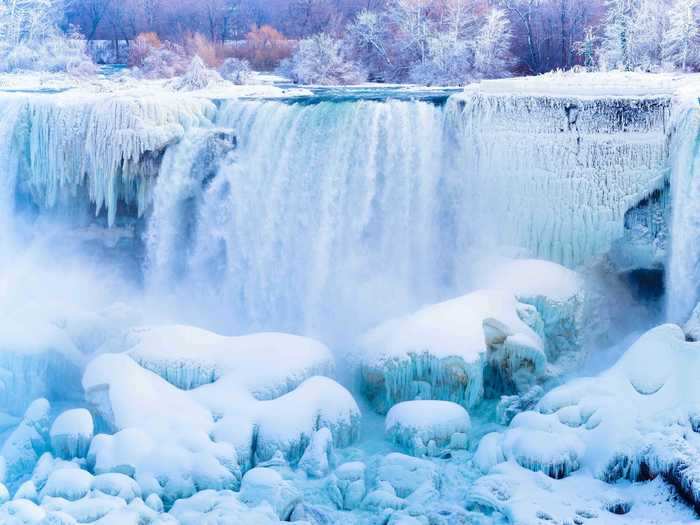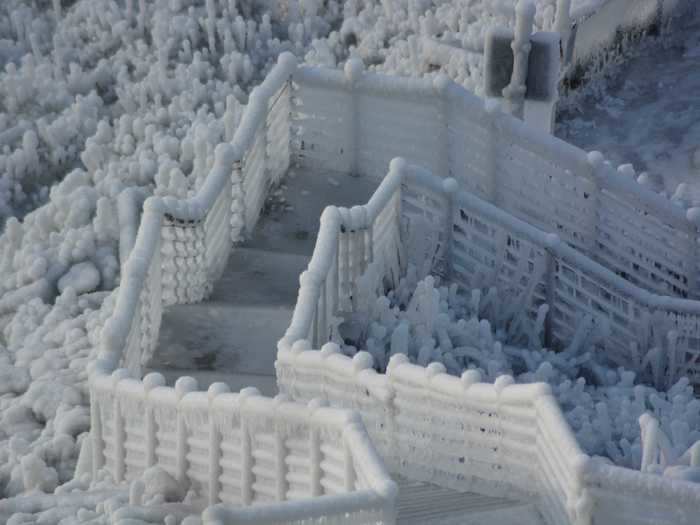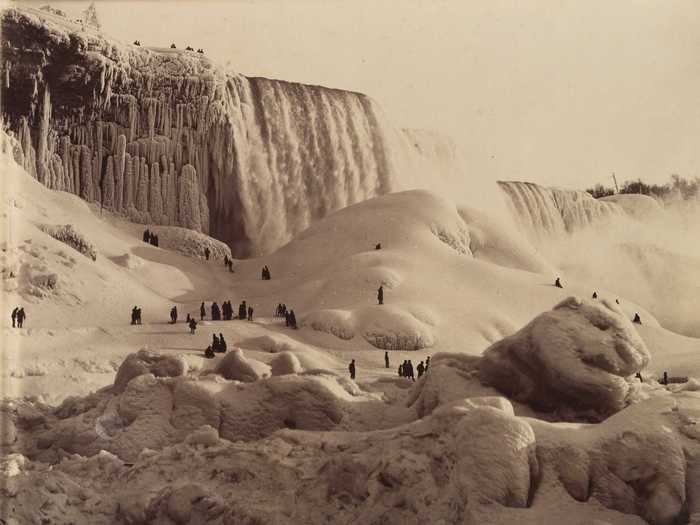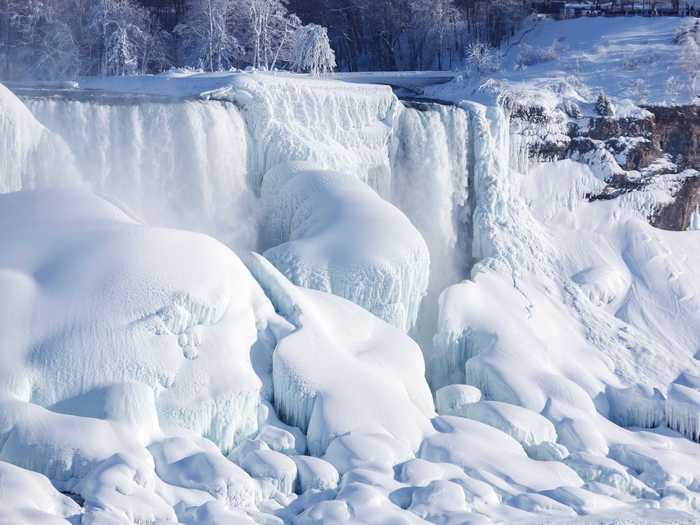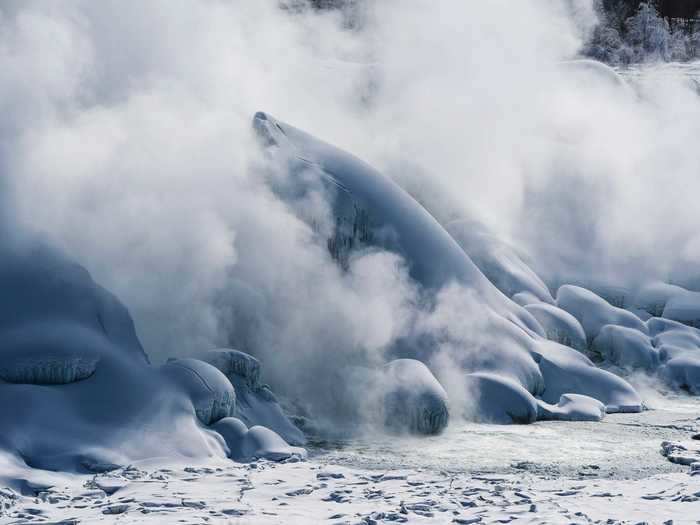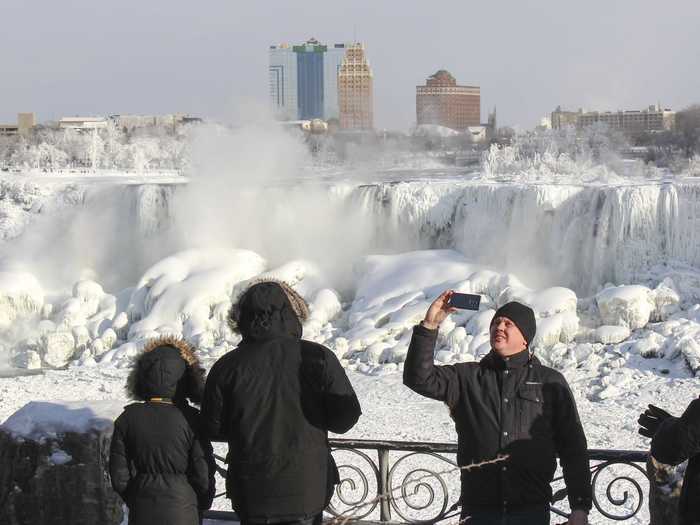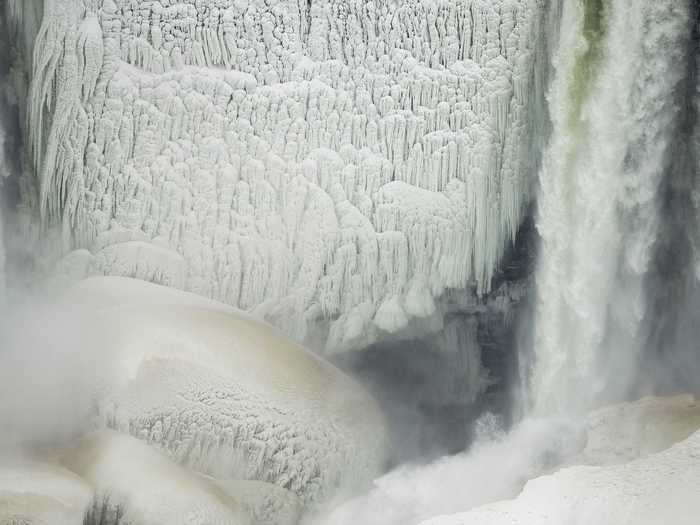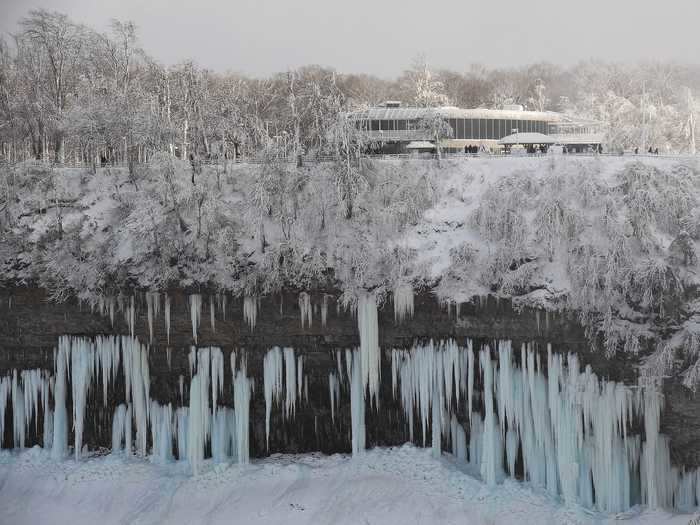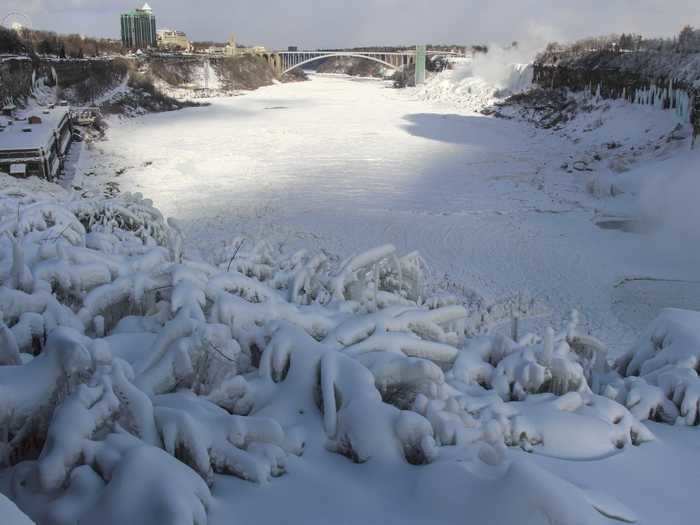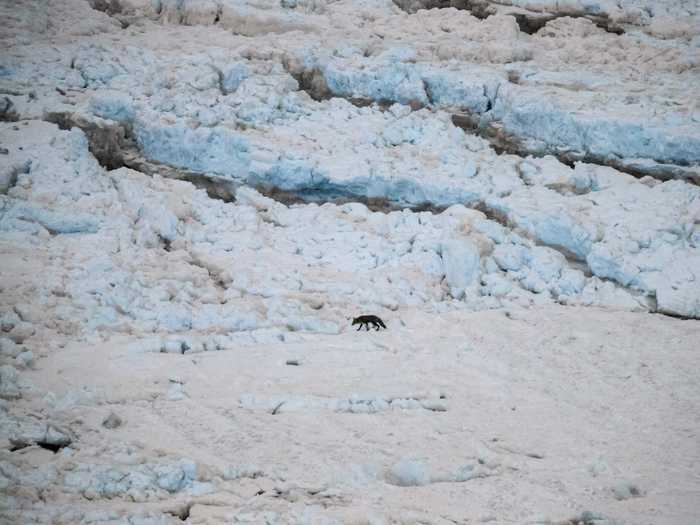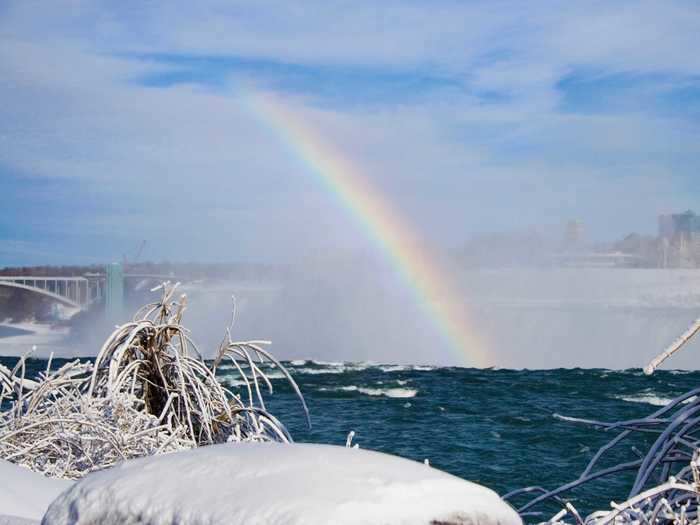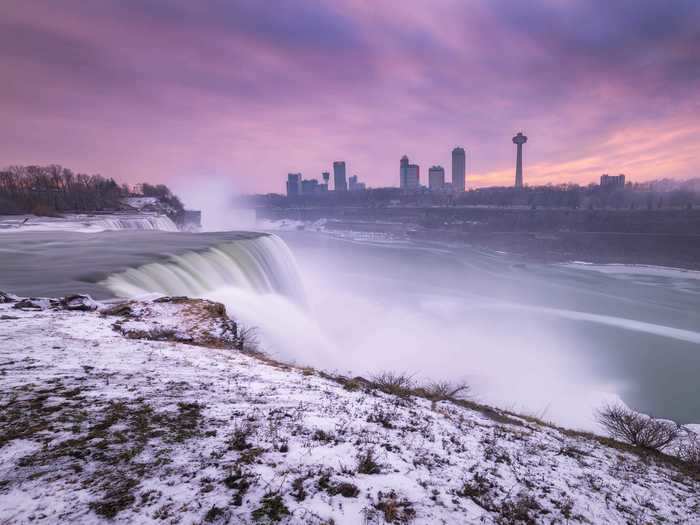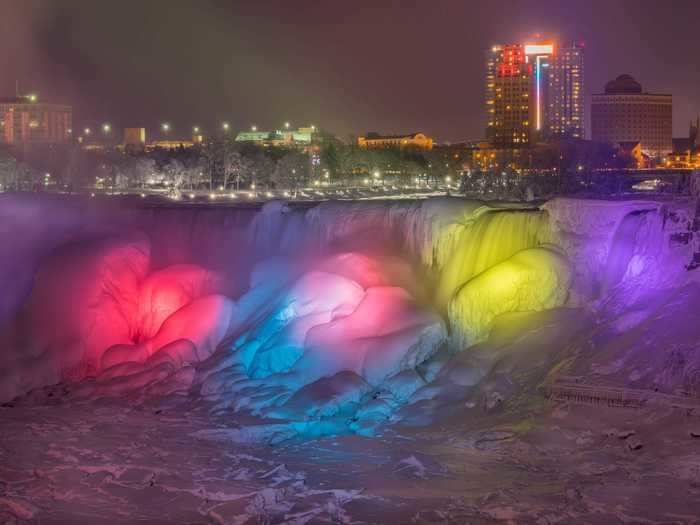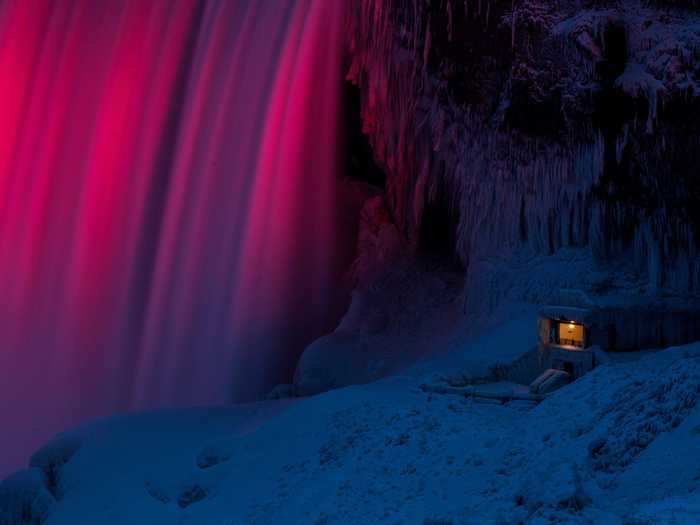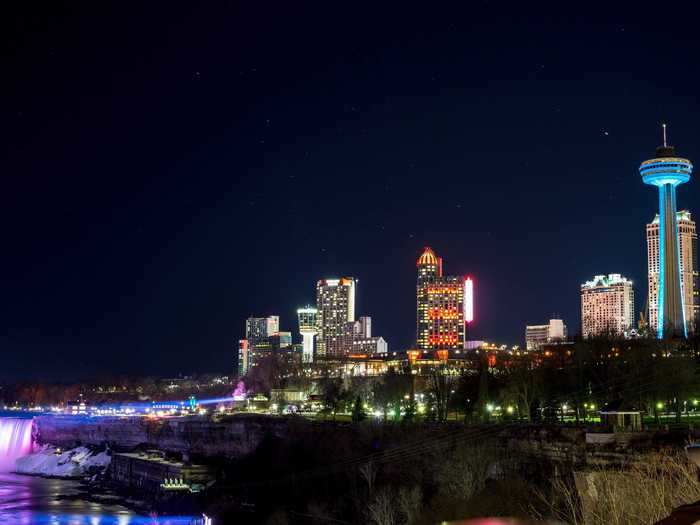- Niagara Falls is beautiful any time of the year, but as photographs taken in previous years show, winter weather makes the natural wonder even more majestic.
- If it's cold enough, the American, Horseshoe, and Bridal Veil Falls will partially freeze, resulting in some breathtaking views.
- The falls typically freeze in January.
Niagara Falls is one of those attractions that is breathtaking no matter what time of year you see it.
With that being said, visiting during the winter months offers some unique views and lets you view the natural wonder in a totally new light.
When the falls partially freeze and the surrounding rock faces are covered in ice, it looks like something out of a fantasy picture book, not Buffalo, New York. And if you stick around for sunset and the nighttime light show, you'll be rewarded with some of the best views possible.
If you've never seen Niagara Falls during wintertime, here are 15 photos from years past that show why it's worth trekking into the cold to visit.
During the winter months, Niagara Falls turns into a snowy wonderland.
Niagara Falls during winter.
Photomanz/Shutterstock
From the blue shine of fresh snow coating the base of the falls to the surrounding landscape coated in white, winter makes Niagara Falls even more majestic.
Almost everything immediately near the falls is coated in white.
These frozen stairs at Niagara Falls look straight out of an ice palace.
Daniel Loya/Shutterstock
Due to the constant precipitation from the falls' mist and the cold temperatures, everything from the rocks to the observation point stairs are coated in ice and snow.
Niagara Falls has always been a popular winter attraction. In fact, visitors used to be able to walk across Niagara Falls' ice bridges.
Visitors crossing Niagara Falls' ice bridges in 1883.
Heritage Images/Getty Images
Almost every year, usually by January, ice bridges form at the base of Niagara Falls that naturally connect the US and Canada. It's the result of Lake Erie freezing and the harsh winter winds blowing ice from the Niagara River over the falls where it then freezes into even bigger chunks of ice, according to The Buffalo News.
Visitors used to be able to walk out onto the bridges and get an unrivaled view of Niagara Falls. But on February 4, 1912, three people died after falling through a crack in the ice into the freezing rapids below, The Buffalo News article explains.
Ever since, visitors have had to stick to designated observation points to observe the falls.
The falls themselves don't completely freeze though.
Niagara Falls during winter.
Wally Stemberger/Shutterstock
With 3,160 tons of water flowing over Niagara Falls every second, it takes a lot of ice to freeze its waterfalls solid. In fact, the falls and Niagara River have never completely frozen in their own right. The only time Niagara Falls has technically frozen solid was on March 29, 1848, when Lake Erie froze and created an ice dam that prevented water from reaching the falls, according to World Atlas. It's a bit of a fluke that lives on as a special day in the natural wonder's history.
Instead, Niagara Falls partially freezes, and when it does, the mist of the falls mixed with the snow is breathtaking.
The American side of Niagara Falls in 2015.
Aaron Vincent Elkaim/Getty Images
The mist rising from the base of the falls looks mysterious and magical, resulting in what looks like fog rolling into a snowy mountain range.
Still, depending on the conditions, Niagara Falls can resemble the Wall from "Game of Thrones."
Niagara Falls in 2018.
Seyit Aydogan/Anadolu Agency/Getty Images
If it's been a cold and snowy enough winter, the mountainous piles of snow and ice can make Niagara Falls look fantastical compared to its surroundings.
Sheets of ice that form on the rocks next to the falls look like natural works of art.
A partially frozen Niagara Falls in 2014.
GEOFF ROBINS/AFP via Getty Images
The cascading layers of ice are like a mosaic of shiny glass.
Some pretty impressive icicles also form on the rock surrounding Niagara Falls.
Icicles formed at Niagara Falls in 2018.
Seyit Aydogan/Anadolu Agency/Getty Images
You thought the icicles hanging off the side of your house were big? Check out these ones.
It's also worth seeing the Niagara River coated in snow and ice.
Niagara Falls in 2018.
Seyit Aydogan/Anadolu Agency/Getty Images
It's pretty impressive how much ice flows over the American and Horseshoe Falls. If you get to visit before the snow and ice start melting, the Niagara River looks more like a glacial ice field than a river.
Bring your binoculars because you might spot some wildlife.
A fox walks on the ice at the bottom of Niagara Falls in 2018.
GEOFF ROBINS/AFP via Getty Images
Against a white backdrop, it's easier to spot the animals, like this fox, that call Niagara Falls home.
If you visit on a sunny day, you'll probably catch a rainbow too.
A rainbow at Niagara Falls.
Valery Remezau/Shutterstock
The constant mist from the waterfalls makes Niagara Falls the perfect place for observing colorful rainbows.
Stick around for sunset and you'll be rewarded with jaw-dropping views.
Seeing these cotton candy colors swirl above the falls makes visiting all the more memorable.
Nighttime offers a completely different view of the snowy falls.
The American Falls illuminated at night.
Laval/Shutterstock
Niagara Falls is illuminated by LED lights every night but the best time to see the lights is arguably in the dead of winter. Seeing the colorful lights painted across pillowy mounds of snow is truly a unique way to view the falls.
It also offers some pretty magnificent opportunities for photos.
An observation point at the base of Niagara Falls, Ontario, in winter of 2018.
AFP/Getty Images
Just make sure you bundle up — it can get pretty cold and windy at nighttime. January is typically the coldest month, with temperatures plunging to an average of 17 degrees Fahrenheit.
Plus you get a beautiful view of the Niagara Falls, Ontario, skyline.
Niagara Falls, Ontario, illuminated at night.
Anton stock/Shutterstock
The US-Canada border is closed right now, but during a normal year, crossing the border to walk through the Ontario Power Generation Winter Festival of Lights is the perfect way to end a visit to Niagara Falls.

